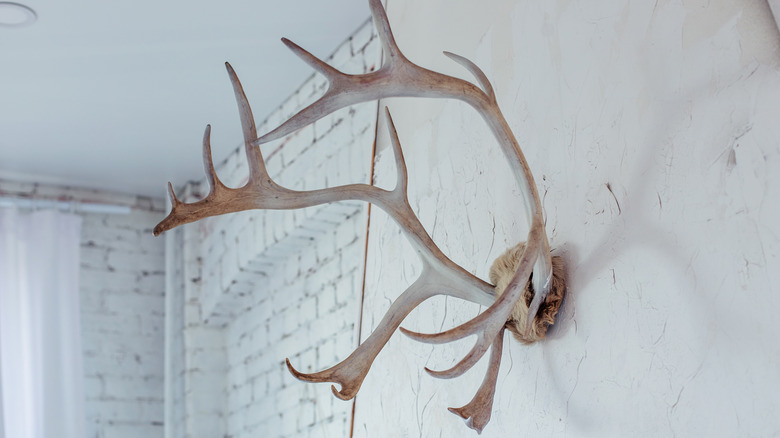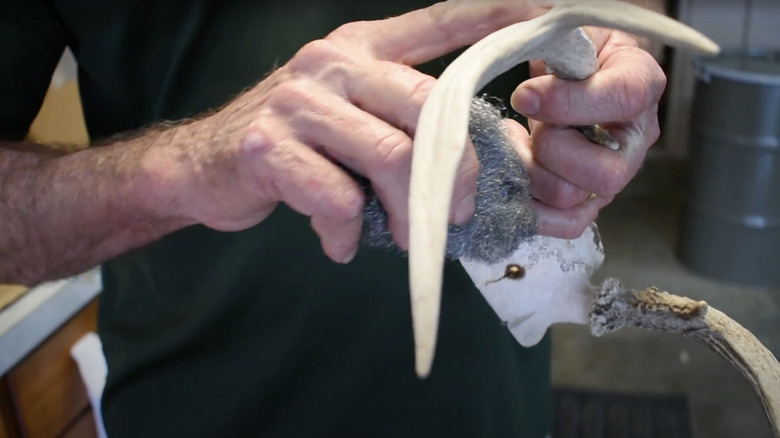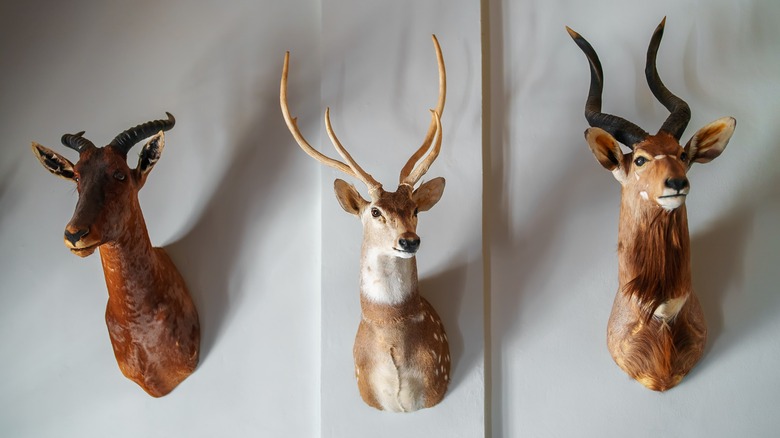How To Clean Antlers In A Rustic Home
Mounted antlers are a classic element in rustic home décor, evoking a sense of wilderness and natural beauty. However, like all decorative items, they require proper care and maintenance to retain their appeal. Cleaning mounted antlers, while straightforward, demands a gentle touch and suitable materials to ensure they are preserved without damage.
With these characteristics in mind, let's gather the right tools for the job. These include a soft-bristled brush or dusting cloth, mild soap, warm water, a toothbrush for tight spots, linseed oil or antler conditioner, clean cloths, a ladder, and protective gloves if you feel you might need them. Once you have rounded up everything necessary for the job, take the ladder and dismount the piece off the wall. This will make the task quicker, more accessible, and more safe for you and those antlers.
However, before diving into the cleaning process, we must understand precisely what antlers are so we don't damage them. If you didn't know, antlers are composed of bone (unlike horns), and that significantly impacts the approach to cleaning them. For example, bone, including antler bone, is porous and can absorb liquids and oils. This means that using too much water or liquid cleaners can lead to absorption, weakening the antlers and causing them to become discolored or moldy. Antlers call for a careful, gentle approach to cleaning and maintenance, so remain patient throughout the process.
Bringing your antlers back to life
The cleaning process involves several careful steps. First, gently remove surface dust using a soft-bristled brush or cloth, ensuring it moves toward the antler's growth. Be gentle to avoid scratching the surface of the antlers. Once dusted, you can wash the antler and create a mixture of warm water and a small amount of mild dish soap. Next, you'll want to dampen a soft cloth in this solution and gently wipe the antlers using a toothbrush for hard-to-reach areas. Avoid soaking the antlers; remember, excessive moisture can damage the bone. Also, if the antlers are mounted, be careful not to wet the mounting material.
If you encounter stubborn stains, gently dab at the stain with a small amount of hydrogen peroxide on a cloth. Be cautious with this step, as hydrogen peroxide can bleach and weaken the antler if used excessively. After cleaning, rinse the soap off with a damp cloth and immediately pat down the antlers with a dry cloth, ensuring they are thoroughly dried to prevent any moisture-related damage.
The final step is conditioning. For a natural shine, you can polish the antlers and add a small amount of linseed oil to restore luster and provide protection. Gently buff the surface using a clean, dry cloth, again aligning with the antler's growth direction. Avoid commercial polishes or waxes, as they can build up over time and attract more dust. Now get back on that ladder and mount that beautiful rustic piece.
Additional tips, maintenance, and display
When it comes to maintaining antlers, avoiding harsh chemicals is crucial. Never use cleaning agents, bleach, or abrasive scrubbers that can cause irreversible damage. Instead, focus on controlling the humidity level in the room where the antlers are displayed. Excessive humidity can lead to mold growth, whereas too little humidity might cause the antlers to dry out and crack. In situations where the antlers suffer from significant discoloration or damage, it's wise to seek advice or restoration services from a professional taxidermist.
Practicing preventive care is vital to keeping your antlers in good condition. Protect them from direct sunlight to prevent bleaching and weakening of the bone. Also, avoid placing them in high-humidity areas to guard against moisture-related damage like mold growth. When displaying your antlers, please choose a location where they are less likely to accumulate dust or be disturbed. Incorporate regular dusting into your cleaning routine to prevent dirt buildup, ensuring your antlers remain pristine and captivating in your space.
Cleaning antlers is a unique process, but such is the price of having that beautiful rustic home style. As you embark on this task, which may not be often, consider the majestic beauty of such an animal and feel good about doing it. Antler care maintains your cherished piece and deepens your appreciation for this craft. Remember, each clean and condition is more than upkeep; it's a way to honor a piece of nature's legacy and your role in preserving it.


